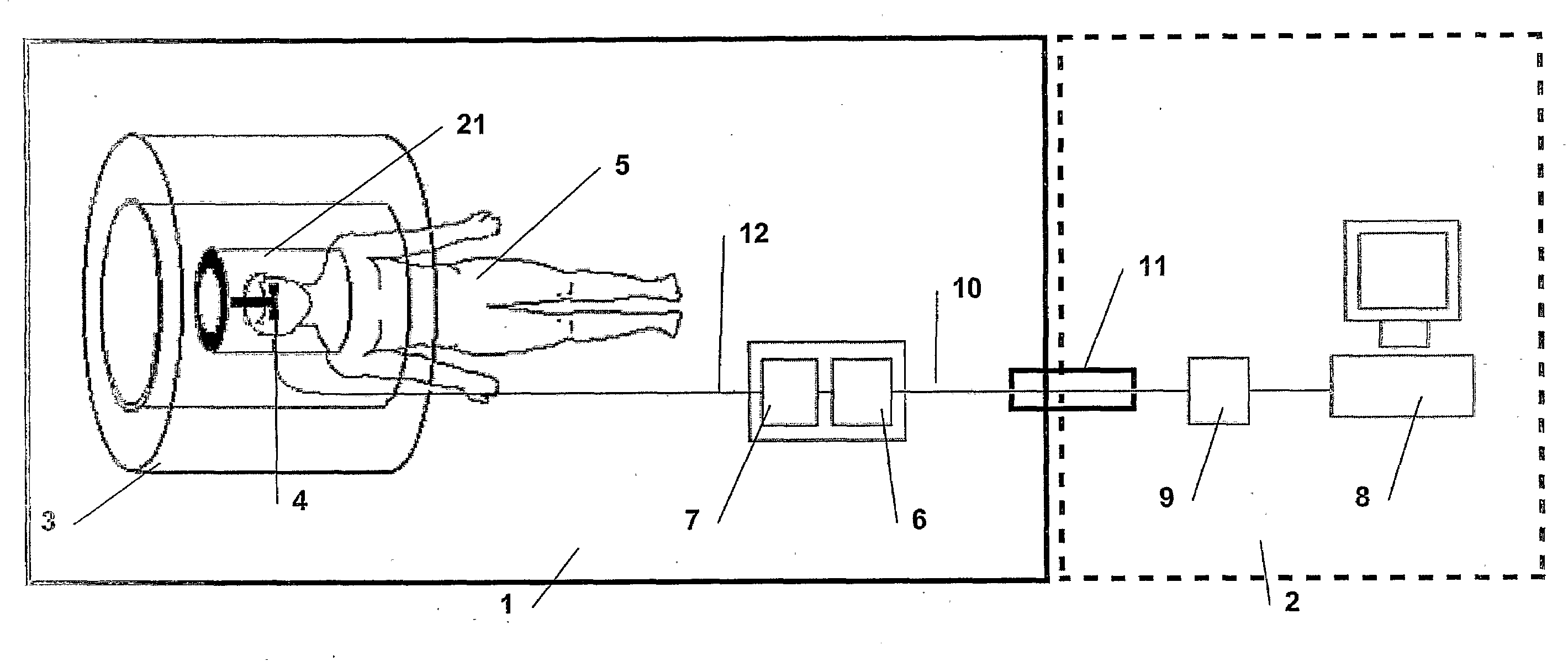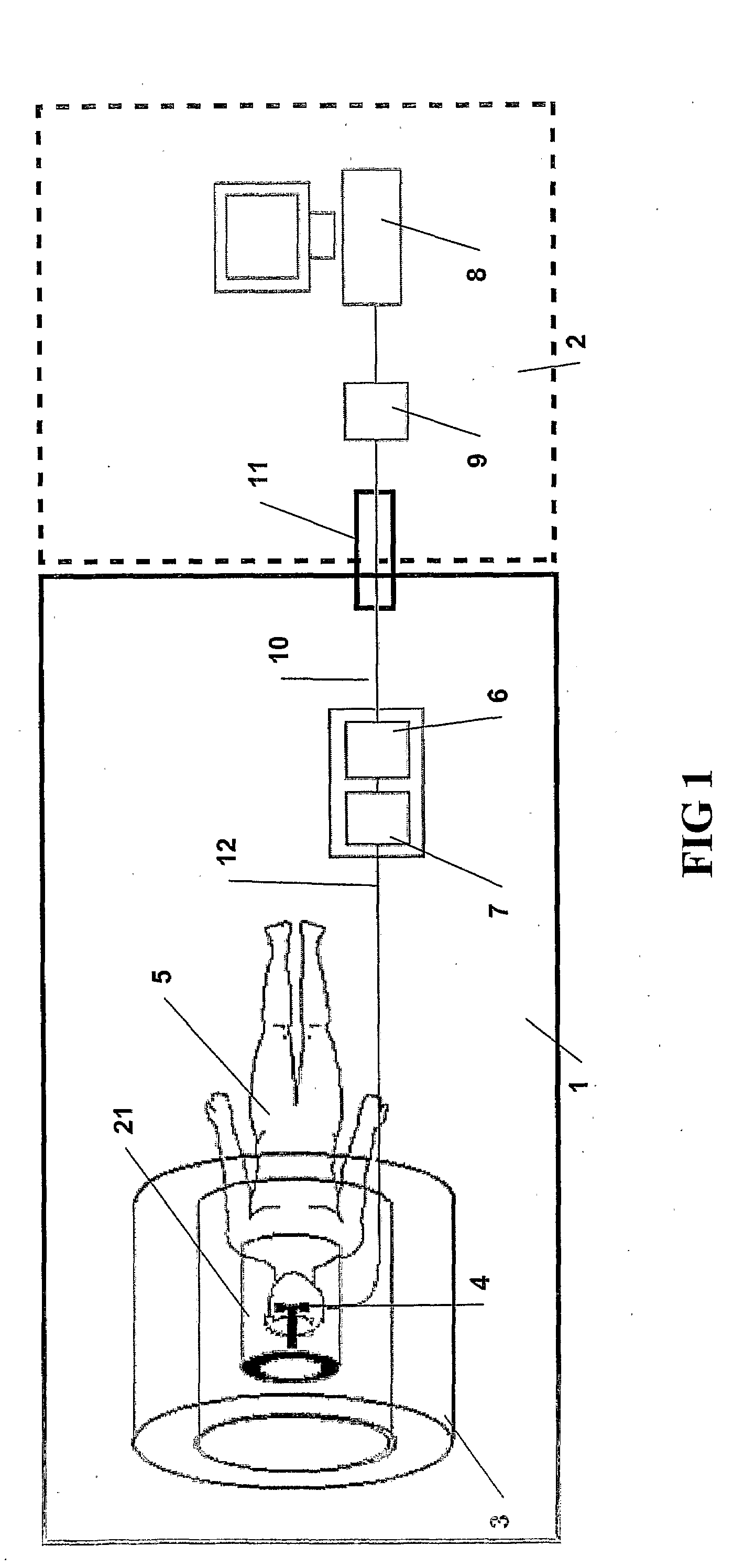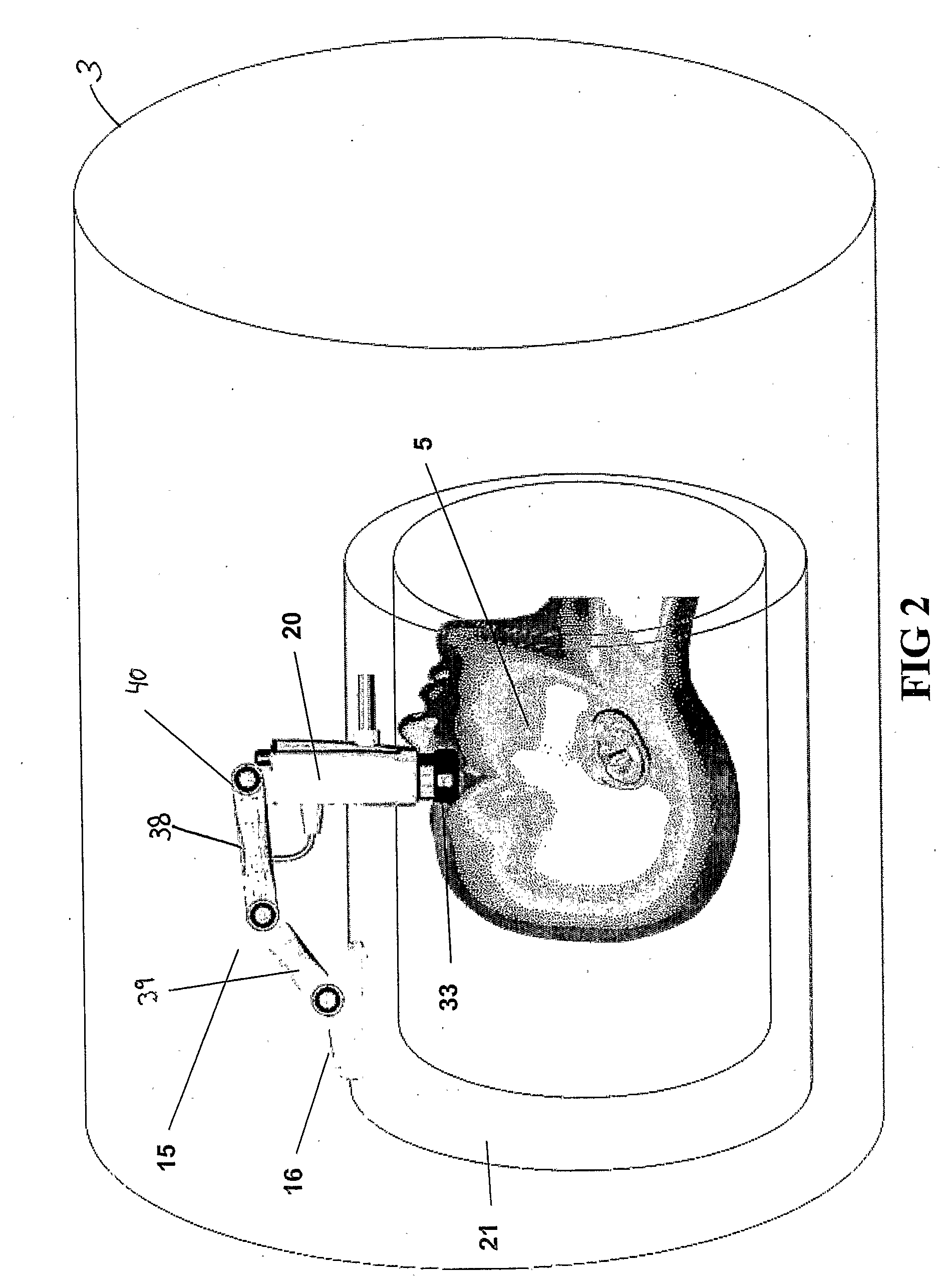Apparatus for providing high resolution images in a mri-device
a technology of high resolution images and mri devices, which is applied in the direction of color television, magnetic variable regulation, television systems, etc., can solve the problems of preventing the normal operation of certain devices, destroying the images generated by mri devices, and limited utility of visual activation methods
- Summary
- Abstract
- Description
- Claims
- Application Information
AI Technical Summary
Benefits of technology
Problems solved by technology
Method used
Image
Examples
Embodiment Construction
[0024]The following detailed description outlines an MRI compatible visual system having a head coil mounted micro display. In the following description, numerous details such as specific materials and configurations are set forth in order to provide a more complete understanding of the present invention. But it is understood by those skilled in the art that the present invention can be practiced without these specific details. In other instances, well known elements are not described in detail so as not to obscure the present invention. In any event, the scope of the invention is best determined by reference to the appended claims.
General Arrangement
[0025]In a preferred embodiment, the present invention provides an MRI compatible visual system. FIG. 1 gives a general overview of how the present invention system is set up in relation to the MRI system, which is disposed partly in a magnet room 1 and partly in a control room 2.
[0026]One portion of the present invention system is loca...
PUM
 Login to View More
Login to View More Abstract
Description
Claims
Application Information
 Login to View More
Login to View More - R&D
- Intellectual Property
- Life Sciences
- Materials
- Tech Scout
- Unparalleled Data Quality
- Higher Quality Content
- 60% Fewer Hallucinations
Browse by: Latest US Patents, China's latest patents, Technical Efficacy Thesaurus, Application Domain, Technology Topic, Popular Technical Reports.
© 2025 PatSnap. All rights reserved.Legal|Privacy policy|Modern Slavery Act Transparency Statement|Sitemap|About US| Contact US: help@patsnap.com



